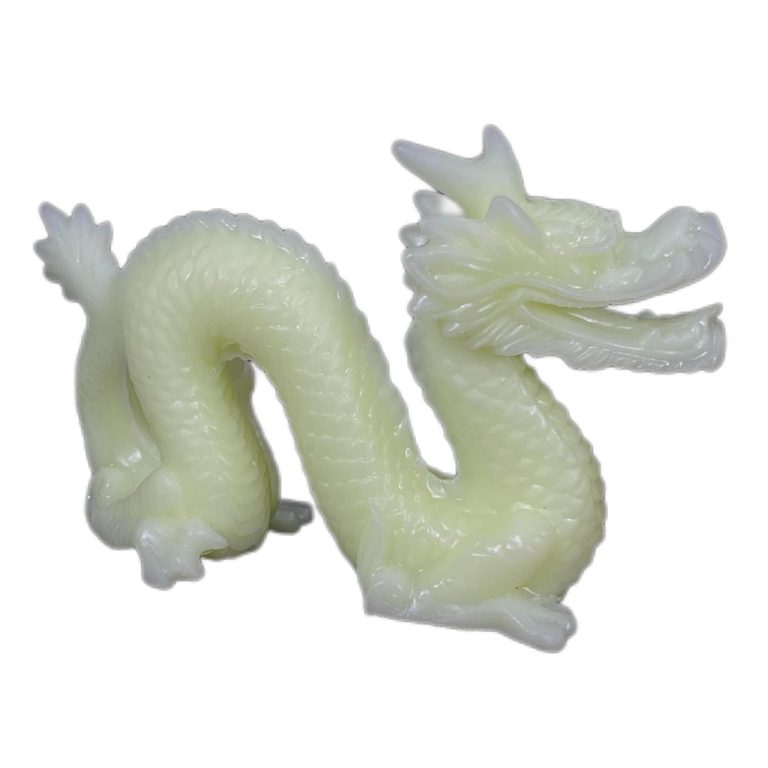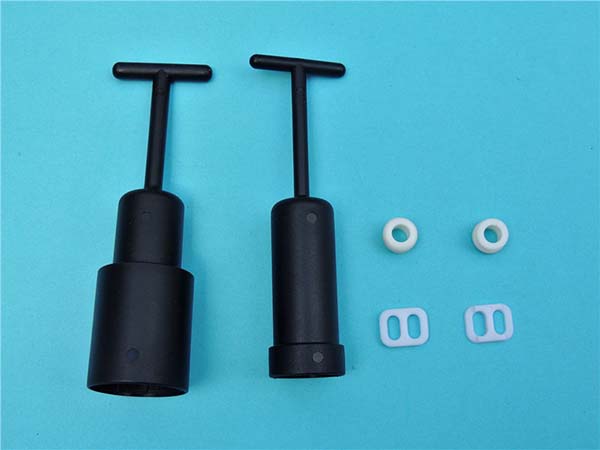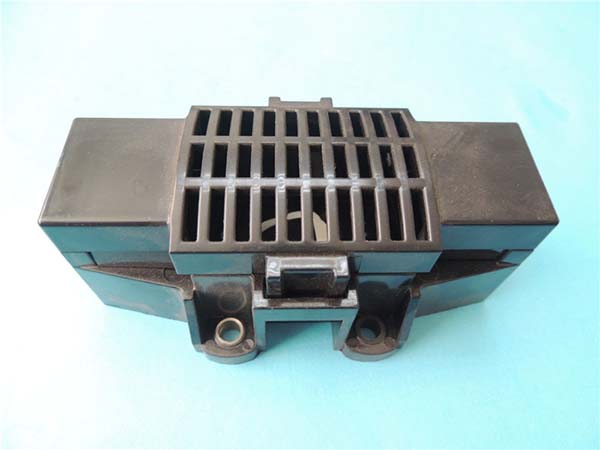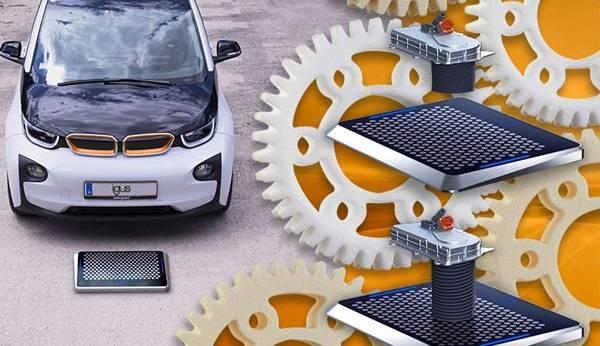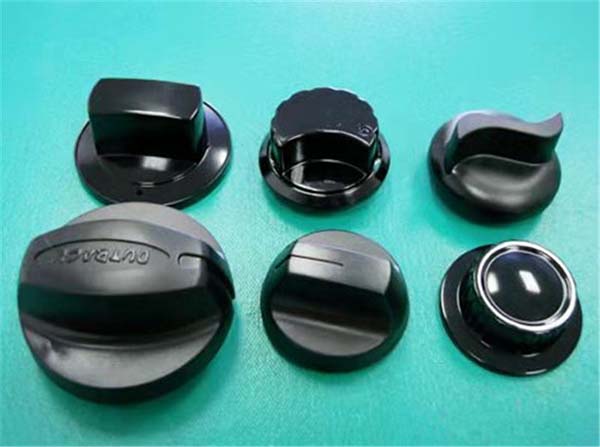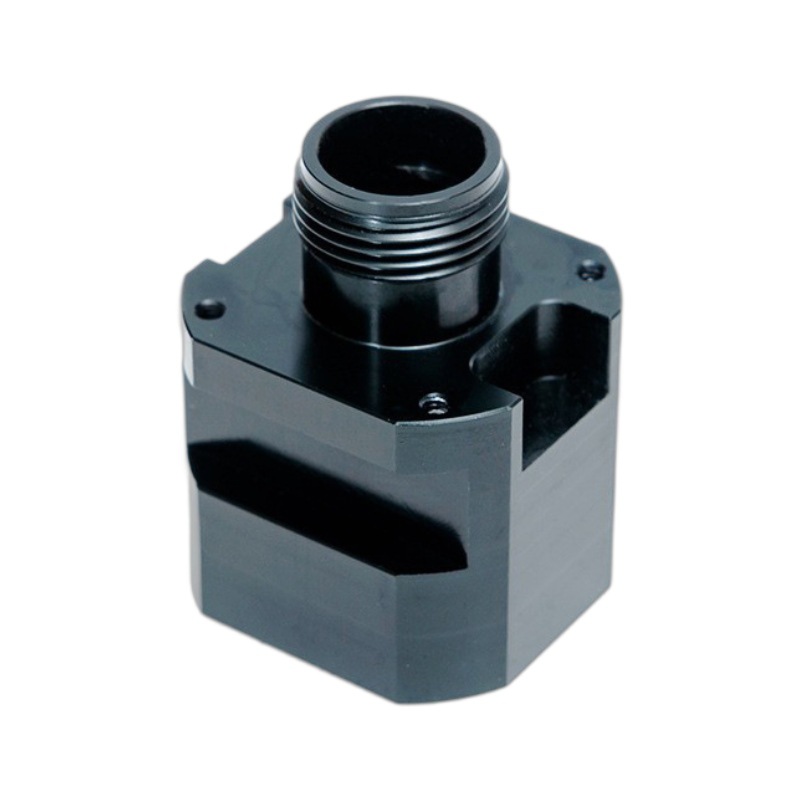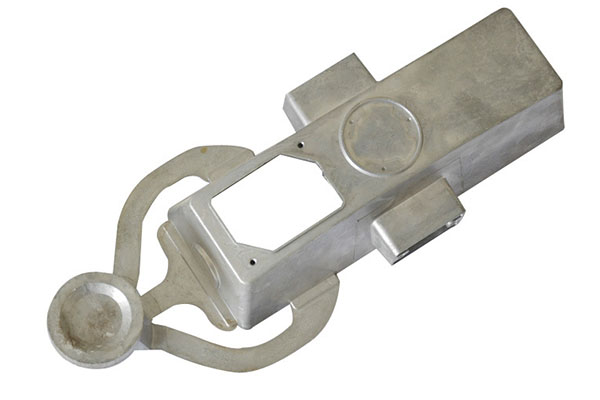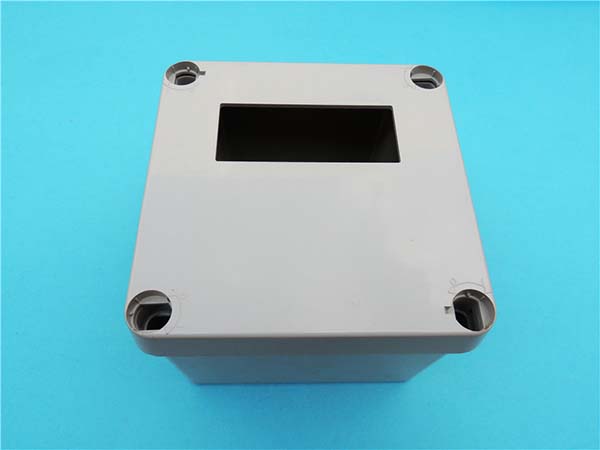Understanding Rapid Prototyping Technology
Definition and Basics
Rapid Prototyping Technology (RPT), also known as rapid manufacturing or 3D printing in some contexts, is a revolutionary approach that has transformed the product development landscape. At its core, RPT is a family of additive manufacturing processes that build three - dimensional objects layer by layer.
The fundamental principle of RPT is based on the concept of discrete - layer manufacturing. It starts with a digital 3D model, typically created using Computer - Aided Design (CAD) software. This CAD model is then sliced into numerous thin cross - sectional layers. These layer - by - layer instructions are sent to a rapid prototyping machine, which deposits or fuses materials in precise patterns according to the digital design. By repeating this process, layer upon layer, a physical object is gradually built up, turning the virtual 3D model into a tangible prototype.
For Yigu Technology example, imagine designing a complex mechanical part. With RPT, you can first create a detailed 3D model of the part in CAD software, specifying all its dimensions, curves, and internal structures. The RPT machine will then use this model to deposit materials like plastic, metal, or resin in a layer - by - layer manner, ultimately producing a physical replica of the part.
Key Types of Rapid Prototyping Technology
- Stereolithography (SLA)
- Principle: SLA was one of the first commercialized rapid prototyping technologies. It uses a photosensitive liquid resin as the raw material. A high - precision laser beam is directed onto the surface of the liquid resin. The laser cures (hardens) the resin in a specific pattern according to the cross - sectional layer information from the CAD model. After one layer is cured, the build platform is lowered slightly, and a new layer of resin is spread over the previously cured layer. The process repeats until the entire 3D object is formed. SLA is known for its high precision and smooth surface finish, making it suitable for applications where fine details are crucial, such as jewelry design and dental prosthetics.
- Selective Laser Sintering (SLS)
- Principle: SLS works with powdered materials, which can include plastics, metals, ceramics, or even composites. A high - power laser is used to selectively sinter (fuse) the powder particles together. The laser scans the powder bed, melting and bonding the particles in the areas defined by the cross - sectional layer of the 3D model. As the laser moves, it creates a solid layer. Once a layer is complete, a new layer of powder is spread over the previous one, and the process continues. SLS is advantageous for creating functional prototypes and end - use parts, especially in industries like automotive and aerospace, as it can handle a wide range of materials with good mechanical properties.
- Fused Deposition Modeling (FDM)
- Principle: FDM is one of the most well - known and accessible rapid prototyping technologies, often used in desktop 3D printers. It uses a thermoplastic filament as the raw material. The filament is fed into a heated extruder nozzle. The nozzle heats the filament until it melts and then extrudes the molten plastic onto the build platform or the previously deposited layer. The nozzle moves in a precise pattern controlled by the 3D model's layer information, depositing the plastic layer by layer. FDM is popular for its simplicity, relatively low cost, and the ability to use a variety of common thermoplastics like ABS and PLA. It is widely used in education, hobbyist projects, and for creating simple prototypes.
- Laminated Object Manufacturing (LOM)
- Principle: LOM uses sheet - based materials such as paper, plastic films, or metal foils. A laser or a mechanical cutter is used to cut the sheet material into the shape of the cross - sectional layer of the 3D model. Each cut layer is then bonded to the previous layer, typically using heat and pressure. As the process progresses, the layers are stacked and bonded together, forming a solid 3D object. LOM is often used for creating large - scale prototypes or models, as it can handle large sheets of material and is relatively fast for certain applications.
- 3D Printing (3DP - Three - Dimensional Printing)
- Principle: 3DP, also known as binder jetting, uses powder materials similar to SLS. However, instead of using a laser to fuse the powder, a liquid binder is selectively deposited onto the powder bed using ink - jet printing technology. The binder bonds the powder particles together in the shape of the cross - sectional layer. After each layer is printed, a new layer of powder is spread, and the process repeats. 3DP is known for its speed and the ability to create complex geometries with multiple materials, as different binders or materials can be jetted simultaneously in some systems. It is used in applications such as sand casting for creating molds and in the production of ceramic prototypes.
The following Yigu Technology table summarizes the key characteristics of these common rapid prototyping technologies:
| Technology | Material Type | Precision | Surface Finish | Ideal Applications |
| SLA | Liquid resin | High | Smooth | Jewelry, dental prosthetics, detailed models |
| SLS | Powder (plastic, metal, ceramic, etc.) | Medium - High | Moderate | Automotive, aerospace, functional parts |
| FDM | Thermoplastic filament | Medium | Rough (can be post - processed) | Education, hobbyist projects, simple prototypes |
| LOM | Sheet materials (paper, plastic, metal foil) | Medium | Varies | Large - scale models, prototypes |
| 3DP | Powder with liquid binder | Medium | Depends on post - processing | Sand casting molds, ceramic prototypes |
How Rapid Prototyping Technology Shapes Innovation
Accelerating Product Development Cycles
In the fast - paced world of modern business, time - to - market is a crucial factor for the success of any new product. Rapid Prototyping Technology (RPT) has emerged as a game - changer in this regard.
Traditionally, the product development process involved multiple stages of design, prototyping, and testing. Each iteration could take weeks or even months, especially when dealing with complex products. For Yigu Technology example, in the automotive industry, designing a new car model would require creating physical prototypes through traditional manufacturing methods such as injection molding. This process was time - consuming, as the molds had to be carefully crafted, which could take a long time to produce.
With RPT, the situation has changed dramatically. Designers can quickly turn their digital concepts into physical prototypes. In a matter of hours or a few days, depending on the complexity of the design and the type of RPT used, a 3D - printed prototype can be in the hands of the development team. This allows for rapid evaluation of the design. Designers can check for form, fit, and function much earlier in the development cycle.
A prime example is the case of a leading consumer electronics company. When developing a new smartphone, they used RPT to create multiple prototypes of the phone's exterior design. By using 3D printing, they were able to produce different versions of the phone's casing within a week. These prototypes were then tested for ergonomics, button placement, and overall user experience. As a result, the company was able to identify and rectify design flaws early on. This significantly reduced the overall product development cycle, and the new smartphone was launched in the market three months earlier than originally planned. This early launch gave the company a competitive edge, allowing them to capture a larger market share before their competitors could respond.
Cost - Efficiency in the Innovation Process
Cost is another major consideration in the innovation process, and RPT offers significant advantages over traditional manufacturing methods.
In traditional manufacturing, setting up production lines for small - batch production can be extremely costly. For instance, in injection molding, the creation of molds is a major expense. A single mold for a plastic part can cost thousands or even tens of thousands of dollars, depending on its complexity. This makes it economically unfeasible to produce small quantities of a product.
RPT, on the other hand, is well - suited for small - batch production. Since there is no need for expensive molds or tooling, the upfront costs are significantly lower. A small - scale startup developing a new medical device can use RPT to produce a limited number of prototypes for clinical trials. The cost of producing these prototypes using 3D printing is a fraction of what it would cost using traditional manufacturing methods.
Moreover, when it comes to design changes, RPT shines even more. In traditional manufacturing, any design modification often requires re - engineering the molds or tooling, which is both time - consuming and expensive. With RPT, a simple change in the digital design can be quickly translated into a new physical prototype.
The following Yigu Technology table shows a cost comparison between traditional manufacturing and RPT for a small - batch production of 100 units of a plastic component:
| Cost Item | Traditional Manufacturing | Rapid Prototyping Technology |
| Mold/Tooling Cost | $10,000 | $0 |
| Material Cost per Unit | $5 | $6 |
| Labor Cost for Production | $3000 | $1000 |
| Total Cost | $18,000 | $1600 |
As shown in the table, for small - batch production, RPT can lead to substantial cost savings, mainly due to the elimination of mold/tooling costs.
Enabling Complex Design Exploration
One of the most remarkable aspects of RPT is its ability to bring complex designs to life, breaking the limitations of traditional manufacturing methods.
Traditional manufacturing techniques, such as machining and casting, have certain geometric constraints. For Yigu Technology example, creating undercuts, internal cavities, or complex lattice structures is either extremely difficult or impossible with these methods. In machining, the tools need to have access to all parts of the workpiece, which restricts the design freedom. In casting, the removal of the casting mold from the final product limits the complexity of the shapes that can be produced.
RPT, however, allows for the creation of intricate and complex geometries. With 3D printing, layers are added one by one, enabling the construction of complex internal structures and external shapes. In the aerospace industry, RPT is being used to manufacture engine components with complex cooling channels. These channels are designed to improve the efficiency of the engine by better managing heat dissipation. Traditional manufacturing methods would struggle to create such precise and complex internal channels.
[Insert an image here of a complex aerospace engine component prototype with intricate cooling channels made using RPT]
Another example is in the field of architecture. Architects can now design and 3D - print scale models of buildings with complex facades and internal layouts. These models can accurately represent the design concept, allowing clients and stakeholders to visualize the final product in a more detailed way than ever before.
Facilitating Collaboration in Innovation Ecosystems
Rapid Prototyping Technology also plays a crucial role in fostering collaboration within innovation ecosystems. In today's innovation - driven economy, no single company or individual can possess all the necessary skills and resources to develop a successful product. Collaboration between different teams, departments, and even different companies is essential.
RPT acts as a common language and a powerful tool for collaboration. For example, in the development of a new electric vehicle, the design team, which is often more concerned with aesthetics and user experience, can use RPT to quickly create physical mock - ups of the vehicle's interior and exterior. These prototypes can then be shared with the engineering team, who can test the functionality and performance of the design. The two teams can work together, making iterative improvements based on each other's feedback.
Cross - industry collaborations also benefit greatly from RPT. A medical device company collaborating with a materials science research institution can use RPT to quickly test new material concepts for their devices. The research institution can provide the theoretical knowledge and new materials, while the medical device company can use RPT to rapidly prototype and test the feasibility of these materials in real - world applications.
A real - world case is the collaboration between a consumer goods company and a 3D printing service provider. The consumer goods company wanted to develop a new line of sustainable packaging. The 3D printing service provider used RPT to create various prototypes of the packaging designs, incorporating different sustainable materials suggested by the consumer goods company. Through this collaboration, they were able to develop an innovative, sustainable packaging solution that was both functional and cost - effective, and the product was successfully launched in the market, receiving positive feedback from consumers.
Applications Across Industries
Aerospace and Automotive
In the aerospace and automotive industries, Rapid Prototyping Technology (RPT) has become an indispensable tool for innovation.
In aerospace, the demand for high - performance, lightweight components is crucial. RPT allows for the creation of complex prototypes of engine parts, such as turbine blades and combustion chambers. These prototypes can be tested under simulated flight conditions to evaluate their performance, including heat resistance, aerodynamics, and mechanical strength. For Yigu Technology example, a leading aerospace company used SLS technology to create a prototype of a new - design turbine blade. The complex internal cooling channels of the blade, which are vital for efficient heat dissipation during operation, were accurately reproduced through 3D printing. This not only reduced the time required to develop the blade from months to weeks but also enabled the company to optimize the design based on the test results of the prototype.
In the automotive industry, RPT is used for a wide range of applications. Car manufacturers use it to quickly produce prototypes of new vehicle models, including body panels, interior components, and functional parts like engine brackets. For instance, when developing a new electric vehicle, the design team can use FDM - based 3D printers to create multiple prototypes of the vehicle's dashboard within a short period. These prototypes can be used to test the placement of controls, the ergonomics of the driver's seat, and the overall aesthetics. This iterative prototyping process helps in improving the design and user experience before mass production. Additionally, RPT can be used to manufacture custom - made parts for classic cars or high - performance vehicles, where traditional manufacturing methods may be too expensive or time - consuming.
Healthcare
The healthcare industry has also been significantly impacted by Rapid Prototyping Technology.
One of the most remarkable applications is in the production of customized medical devices. For example, 3D - printed prosthetics have revolutionized the lives of amputees. These prosthetics can be tailored to the exact shape and size of the patient's residual limb, providing a more comfortable and precise fit compared to traditional, off - the - shelf prosthetics. A study by a leading medical research institution found that patients who used 3D - printed prosthetics reported a 30% increase in comfort levels and a 25% improvement in their ability to perform daily activities compared to those using traditional prosthetics.
RPT is also used to create anatomical models for surgical planning. Surgeons can use 3D - printed models of a patient's organs, such as the heart or liver, to better understand the patient's unique anatomy before performing complex surgeries. This allows them to plan the surgical approach more accurately, reducing the risk of complications. In a case at a major hospital, a surgeon used a 3D - printed model of a patient's heart with a congenital defect to practice the surgical procedure beforehand. As a result, the actual surgery was completed 20% faster, and the patient's recovery time was reduced by a week.
Consumer Goods
In the consumer goods industry, RPT has become a powerful tool for bringing new and innovative products to market quickly.
Companies can use RPT to rapidly prototype new product ideas. For Yigu Technology example, a consumer electronics company can use 3D printing to create prototypes of new smartwatch designs. This enables them to test different form factors, button placements, and display sizes in a short time. By getting early feedback from consumers on these prototypes, the company can make design improvements and bring the final product to market faster.
Moreover, RPT allows for the production of customized consumer goods. A jewelry brand can use SLA technology to create personalized jewelry pieces. Customers can provide their design ideas, and the brand can use 3D printing to turn these ideas into unique jewelry items. This not only meets the growing demand for personalized products but also gives the brand a competitive edge in the market. According to market research, the market for personalized consumer goods has been growing at an annual rate of 15% in recent years, and RPT is playing a significant role in enabling this growth.
FAQs
What are the most common types of rapid prototyping technology?
The most common types include Stereolithography (SLA), which uses a laser to cure liquid resin layer - by - layer, offering high precision and a smooth surface finish, ideal for detailed models like jewelry. Selective Laser Sintering (SLS) works with powdered materials (plastics, metals, etc.), fusing them with a laser, suitable for functional prototypes in industries such as automotive and aerospace. Fused Deposition Modeling (FDM) extrudes molten thermoplastic filament, popular for its simplicity and cost - effectiveness, often used in education and hobbyist projects. Laminated Object Manufacturing (LOM) uses sheet - based materials, cutting and bonding them layer by layer, useful for large - scale prototypes. Three - Dimensional Printing (3DP) deposits a liquid binder onto powder materials, known for its speed and ability to create complex geometries, used in applications like sand casting molds.
How accurate is rapid prototyping technology?
The accuracy of rapid prototyping technology depends on several factors, such as the type of technology used, the complexity of the design, and the quality of the equipment. Generally, SLA can achieve an accuracy of ±0.05 - ±0.1 mm, making it highly accurate for applications that require fine details. SLS also offers good accuracy, typically in the range of ±0.1 - ±0.2 mm. FDM has a relatively lower accuracy, usually around ±0.1 - ±0.4 mm, but this can be improved with post - processing techniques. For example, in high - precision aerospace applications, SLA or SLS might be preferred due to their better accuracy, while for less critical applications like some consumer product prototypes, FDM could be sufficient.
What are the main advantages of using rapid prototyping in product development?
There are several key advantages. First, it significantly shortens the product development cycle. Prototypes can be produced in a matter of hours or days, allowing for quick design evaluations and iterations. Second, it reduces costs, especially for small - batch production, as there is no need for expensive molds or tooling. Third, it enables the exploration of complex designs that are difficult or impossible to achieve with traditional manufacturing methods. Fourth, it facilitates collaboration within innovation ecosystems by providing a tangible way for different teams to share and improve on ideas. Overall, rapid prototyping helps companies bring innovative products to market faster and more cost - effectively.
